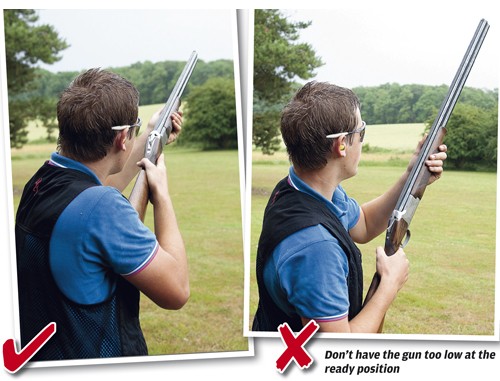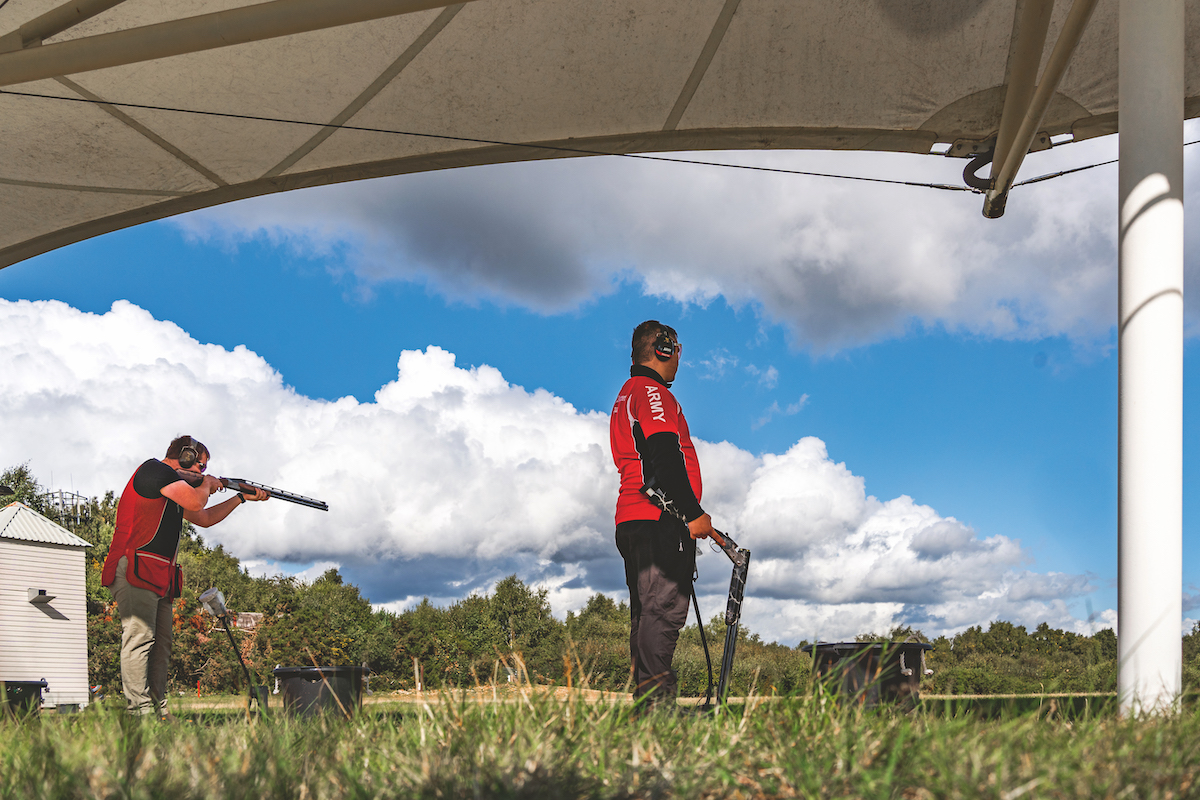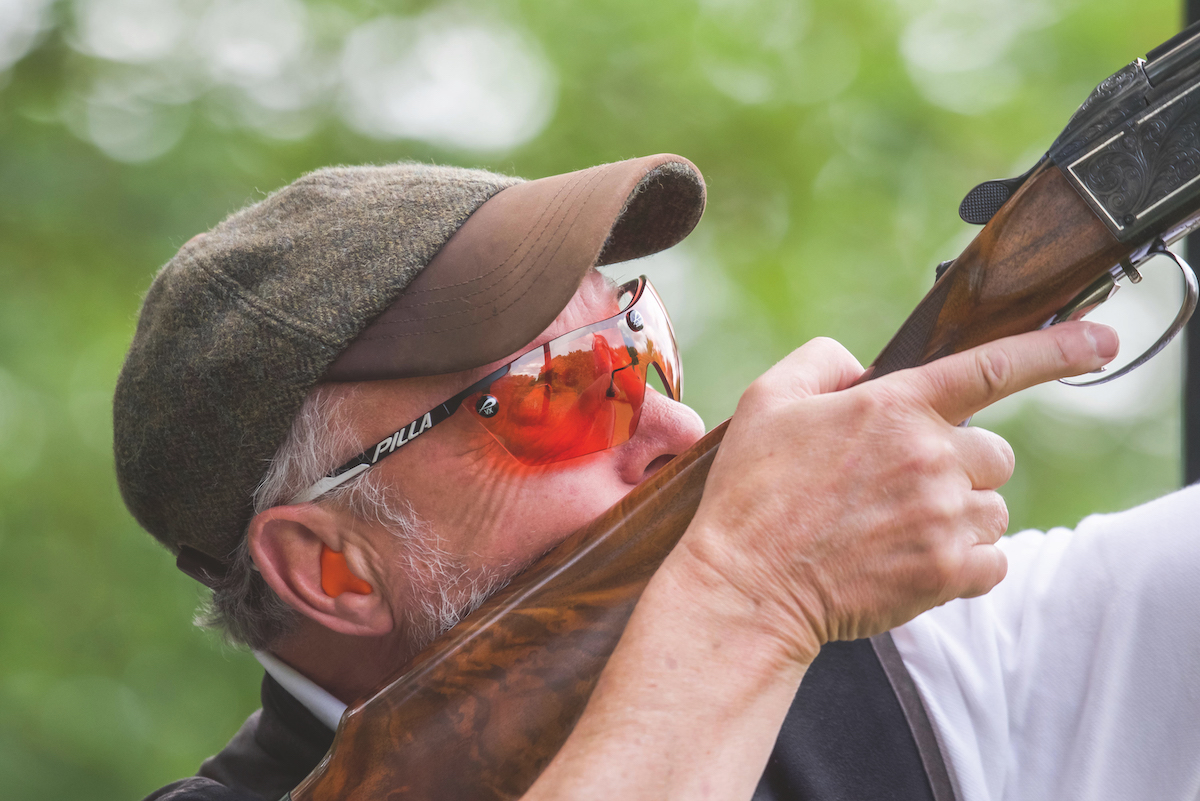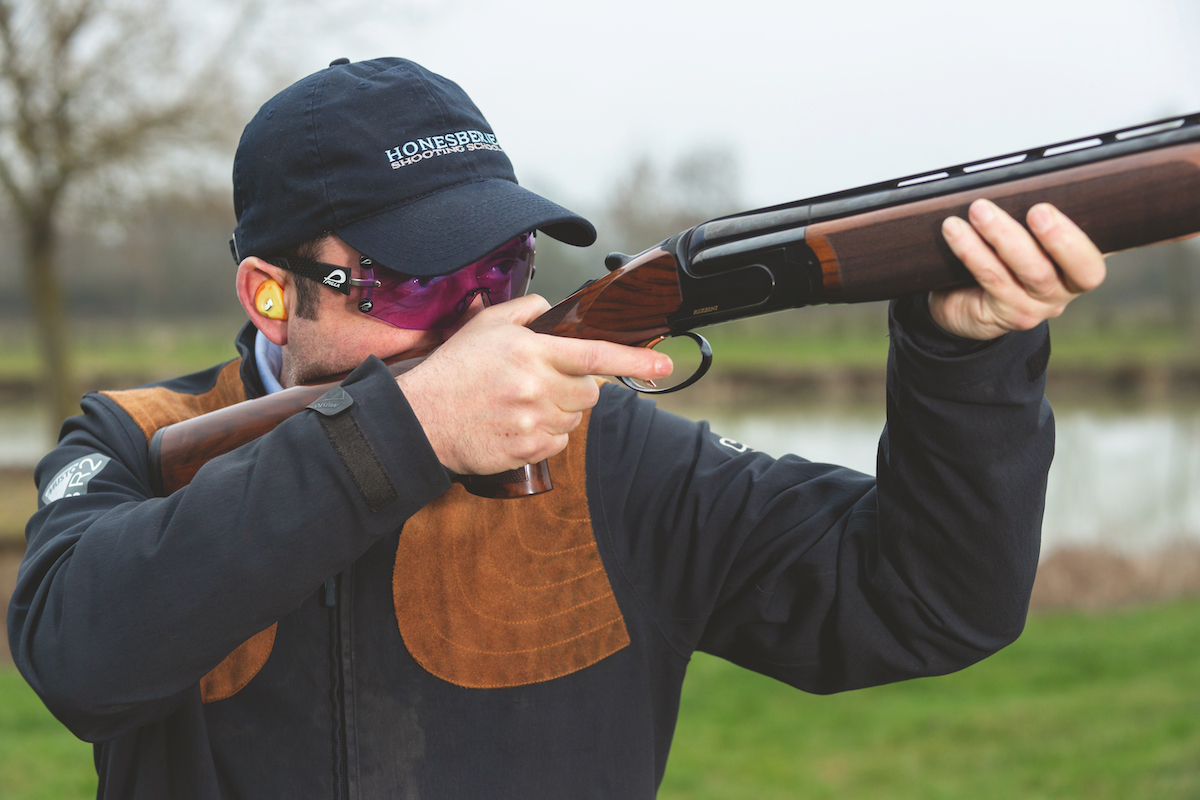SHOOTING TIPS: 3 stage checklist!

Shooting tips: 3 stage checklist!
It was really interesting to see the new ShotKam, barrel-mounted video camera in action last month, as the results illustrated the fact that sometimes we simply don’t do what we think we’re doing.
For example, in one of the clips we took there was a sequence of my son, Rob, shooting a simultaneous pair of quartering/driven birds.
By watching the placement of the reticule on the video we see him shoot the first bird in true maintained lead style, but for the second he definitely paused the gun and then used a swing through approach.
Admittedly he broke both clays, but I’m sure if asked he’d tell you that he shot both targets à la maintained lead.

So this got me thinking.
If we’re missing birds, maybe it’s sometimes because we’re doing something completely different (in reality) to what we think we’re doing.
With this in mind I then wondered how we could turn this to our advantage and come up with a list of things that we need to make sure we do every time – before, during and after – we pull the trigger.
This ‘checklist’ can then be our self-coaching safety net, our get out of jail card if you like, for when we’re missing targets and can’t fathom out why.
By making sure you always check that you’re doing the following, I can guarantee you’ll improve your scores.
To help you remember, just repeat this little three-S-mantra before you shoot – Stance, Stock and Swing.
STANCE
Check that you’re addressing the bird correctly. ‘Obvious’, you might say, but you’d be surprised how many people make it really difficult for themselves by getting this simple thing wrong.
As far as the feet go, the general rule is to have the toe of the front foot pointing towards the kill zone – the area where you intend to bust the clay.

If your feet are out of position you’ll always struggle to break targets consistently.
Sure, you might still hit more than your fair share, but when you miss – and you certainly will on certain types of targets – it will probably be because of your original stance position.
Also, when your feet are placed correctly it’s going to make any change of stance easier, essential when you’re looking to kill the second bird of a pair.
Consider this extreme example; your leading foot is at three o’clock when you fire at the first bird.
Unfortunately, though, in reality your front foot should have been at 10 o’clock to have any chance of hitting the second.
Assuming you’ve done everything else correctly – this initial stance means you’re going to have to do some pretty slick footwork between shots!
Just imagine how tricky it would have been to nail the second bird if your foot was at, say, five-ish – you’d be doing blasted pirouettes and you’d almost certainly miss!
This is an extreme example admittedly, but it does go to prove the fact that to improve any chance of breaking clays your feet must be correctly positioned.
Check that you’re addressing the bird correctly.
‘Obvious’, you might say, but you’d be surprised how many people make it really difficult for themselves by getting this simple thing wrong.
As far as the feet go, the general rule is to have the toe of the front foot pointing towards the kill zone – the area where you intend to bust the clay.
If your feet are out of position you’ll always struggle to break targets consistently.
Sure, you might still hit more than your fair share, but when you miss – and you certainly will on certain types of targets – it will probably be because of your original stance position.
Also, when your feet are placed correctly it’s going to make any change of stance easier, essential when you’re looking to kill the second bird of a pair.
Consider this extreme example; your leading foot is at three o’clock when you fire at the first bird.
Unfortunately, though, in reality your front foot should have been at 10 o’clock to have any chance of hitting the second.
Assuming you’ve done everything else correctly – this initial stance means you’re going to have to do some pretty slick footwork between shots!
Just imagine how tricky it would have been to nail the second bird if your foot was at, say, five-ish – you’d be doing blasted pirouettes and you’d almost certainly miss!
This is an extreme example admittedly, but it does go to prove the fact that to improve any chance of breaking clays your feet must be correctly positioned.
Getting stuck in – physically – is just as an important part of the stance as your feet position.
Leaning into the shot says you mean business and it will also enhance the ease at which you can swing the muzzles.

An extra bonus is that any affects of the ‘kick’ will seem to be lessened.
Assuming the gun is mounted correctly – more of that later – you’ll hardly know the cartridge has been fired – which is always a confidence booster and lessens any risk of potential flinching or trigger freeze.
The last thing to consider concerning stance is the ‘pick-up’ point.
This is the point on the flight path where your brain actually acknowledges the fact that the target is visible.
Confusingly, this is not the point where the bird comes into view; it’s slightly after this, as it takes a fraction of a second for our eyes to comprehend the fact that they can now see the clay and then pass this information to the brain.
(Then you also need to accept that it’s going to take a few more milliseconds for the brain to tell your arms to start to mount the gun.)
Obviously with a fast-moving target the bird will have travelled a certain distance even before you’re ready to mount and pull the trigger.
This is why it’s crucial to know exactly from where the bird is going to appear.
Otherwise you’re going to be scouring the sky, wasting valuable time looking in vain for the clay.
When you know where the pick-up point is you can then set your muzzles accordingly, ready to carry out the perfect gun mount.
STOCK
The second stage of our checklist concerns the stock and it’s a simple rule to follow.
When the gun is mounted, don’t lift your head off the stock.
Getting your face planted on the stock requires a good, consistent gun mount – it’s absolutely essential that you mount the gun in exactly the same way, every time – so here’s a few pointers to help you when you’re practicing, even at home in front of a mirror.

» Always bring the gun to your cheek, not your cheek to the gun.
» A parallel gun mount is essential, irrespective of the angle at which the barrels are held at the ready/call position.
» Don’t have the gun too low at the ready position. Ideally it should be just out of the pocket of the shoulder as extra movement equals extra effort and wasted time.

» Remember your ‘front’ hand needs to control the swing and it should be positioned on the fore-end according to the type of bird you’re taking, i.e for a high driven bird, consider having the forehand back a little so it doesn’t impair the swing.
SWING
Swinging the gun properly and getting ahead of the bird is one of the most important aspects of all the shooting skills so it must be practiced.

Now, we considered most of the basics of the swing in some considerable depth a couple of months ago, so I won’t repeat myself here, but hopefully, having taken that particular advice onboard, you’ll find the easiest and most convenient way to improve is to spend just a few minutes a day dry mounting and swinging the gun at home.
Use the line up the corner of your living room, or where the ceiling meets the wall as a guide – set yourself up properly and practice following that line with the muzzles of the gun.

When you can follow the line smoothly and consistently a hundred times in a row you’re almost there – you’re on the way to building up the muscle-memory needed to mount and swing like a professional.
Do it 1,000 times in a row and you’ve cracked it!








